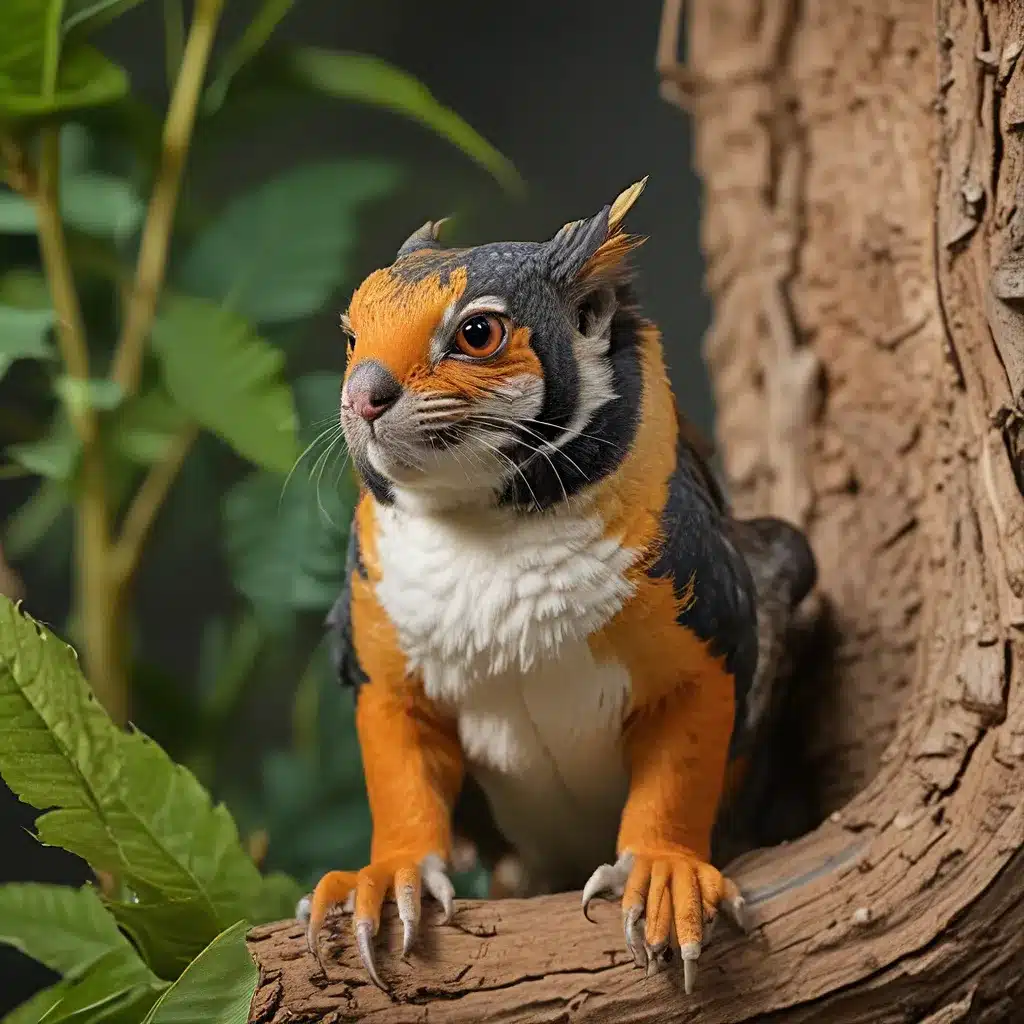
The Invisible Needs of Our Exotic Companions
As proud pet parents, we shower our furry, feathered, and scaly companions with love and affection. But have you ever wondered if that’s enough? Sure, we make sure they’re fed, watered, and taken to the vet, but what about their mental well-being? That’s where environmental enrichment comes into play – a game-changing approach that can transform the lives of our exotic pets.
Imagine being cooped up in the same room, day in and day out, with nothing to stimulate your senses. For our exotic companions, that’s often their reality. Lack of sensory stimulation can lead to some real behavioral issues, like over-grooming, self-mutilation, restlessness, and even cage chewing. And the consequences don’t stop there – it can also drive them to anorexia or obesity due to the stress, boredom, and inactivity.
But fear not, fellow pet enthusiasts! There’s a world of possibilities when it comes to enriching the lives of our exotic friends. From social and physical enrichment to nutritional and sensory experiences, the options are endless. Let’s dive in and explore how we can make a real difference in the lives of our one-of-a-kind companions.
Fostering Social Connections
Did you know that social enrichment can be one of the most effective ways to enhance the well-being of our small pets? It’s true! Critters like rabbits, guinea pigs, rats, mice, chinchillas, and sugar gliders thrive when housed in groups. It’s like a furry social network, where they can engage in all sorts of natural behaviors and forge those oh-so-important bonds.
But wait, hold on – not all pets are created equal when it comes to social living. Species like Syrian and Chinese hamsters may be prone to aggression when housed together. In these cases, it’s best to keep them separated and consult your veterinarian for guidance on proper care.
And here’s a pro tip: when it comes to mixing different species, tread carefully. It’s always a good idea to get the green light from your vet before introducing new furry (or scaly) friends to the mix. After all, we want to make sure everyone gets along and feels safe in their shared abode.
Unlocking Physical Freedom
Now, let’s talk about physical enrichment – the kind that allows our exotic companions to engage in all their natural behaviors, like digging, chewing, gnawing, climbing, and perching. These activities not only keep them physically active but also help alleviate stress and boredom.
For example, hamsters and gerbils absolutely love having deep bedding to burrow and tunnel in. It’s not just for fun – it also helps them regulate their body temperature and satisfy that innate need to dig. And don’t forget about those carpeted ramps that can give your pets access to all sorts of vertical spaces they adore.
But the fun doesn’t stop there! Introducing novel objects to their environment from time to time can also work wonders, stimulating their spatial memory and helping them adapt to new situations with ease. It’s like a never-ending game of hide-and-seek, but for our furry, scaly, and feathered friends.
Nourishing the Body and Mind
Let’s not forget about the importance of nutritional enrichment. By offering healthy, species-appropriate food treats, we can foster a whole new level of stimulation and excitement in our pets’ lives. Imagine the joy of your guinea pig discovering a hidden stash of fresh veggies or your rat going on a foraging mission through their cozy bedding.
Remember, it’s always best to consult your veterinarian when it comes to the right feeding requirements and treat allotments for your particular pet. We don’t want to overdo it and risk any unwanted health issues.
Awakening the Senses
But the fun doesn’t stop there! Sensory enrichment is another crucial component in creating a fulfilling environment for our exotic companions. Think about it – our pets rely heavily on their senses to navigate the world, so why not cater to that?
You can start by rotating the cage furniture and providing a day-night cycle that aligns with your pet’s natural rhythms. And don’t be afraid to introduce new tastes and smells to their living space – it’s like a mini-vacation for their senses!
Empowering Our Pets’ Agency
Finally, let’s talk about occupational enrichment – the art of giving our pets a sense of control over their own environment. How do we do that, you ask? By providing them with materials that allow for nest-building or chewing access to different areas of their habitat.
It’s all about creating opportunities for them to feel like the captains of their own little ships. After all, who doesn’t love a good DIY project? Your pets might just surprise you with their interior design skills.
The Ripple Effect of Environmental Enrichment
So, there you have it, folks – the power of environmental enrichment in the lives of our exotic companions. But the benefits don’t stop there. By investing in the well-being of our pets, we’re not only improving their quality of life but also fostering a deeper connection with them.
And let’s not forget the positive ripple effect it can have on us as pet parents. When our furry, feathered, and scaly friends are happy and thriving, it’s like a little piece of sunshine in our own lives. We get to witness their playful antics, their curious explorations, and their unwavering loyalty – a true testament to the power of enrichment.
Ready to take your exotic pet’s life to the next level? Head over to Golden Exotic Pets and explore the wide range of enrichment toys, treats, and resources designed to bring out the best in your one-of-a-kind companion. Together, let’s create a world where our exotic pets thrive, both physically and mentally. After all, they deserve nothing less than the best.

